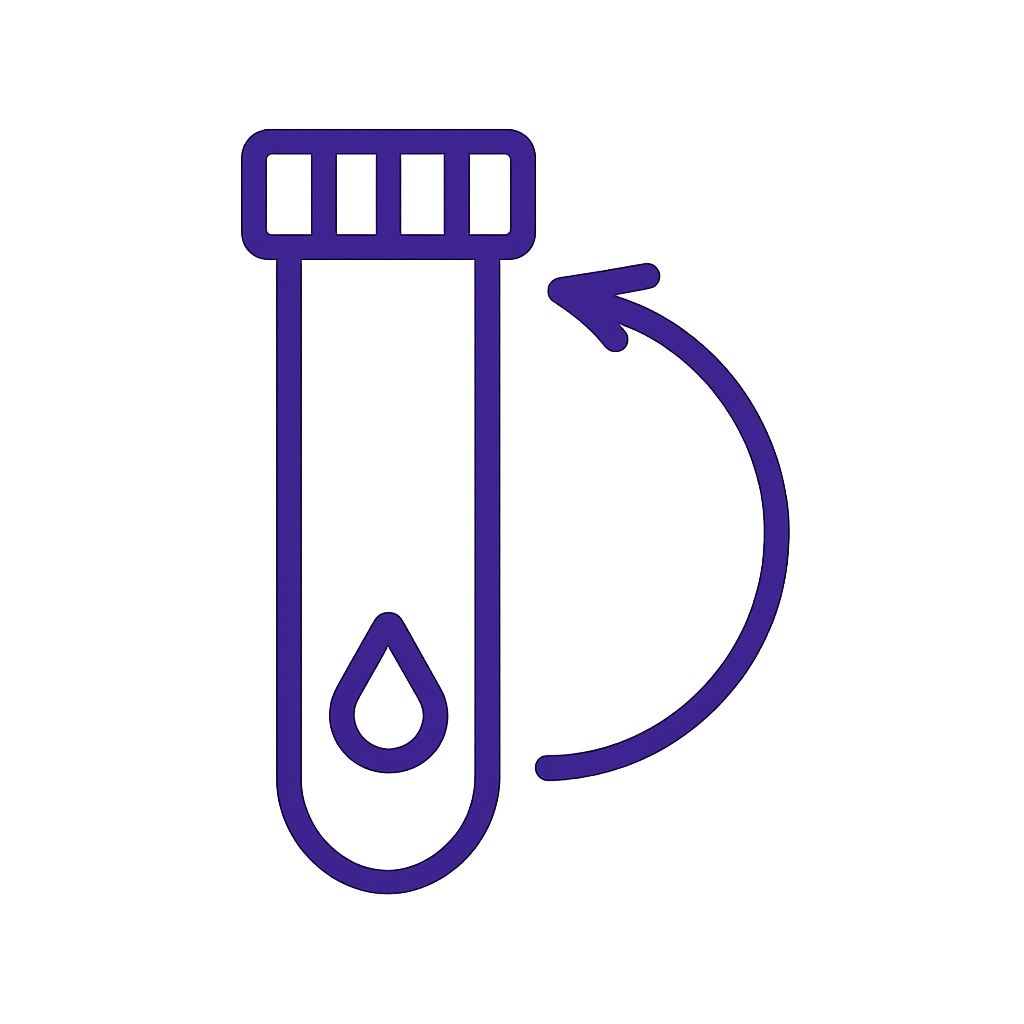Protein Metabolism and Muscle Preservation in Older Adults: Pathways to Longevity and Healthy Aging


Find more details about Protein Metabolism & Muscle Preservation in Older Adults
Read more: Protein Metabolism and Muscle Preservation in Older Adults
Get started with Longevity & Healthy Aging in 7 easy steps!
-

1. Purchase a kit & create an account.
Do not forget to buy the personalized nutrition advice and the 3-month Noory subscription to get maximum benefit for Longevity & Healthy Aging.
-

2. Fill in 3 day food diary & survey
In the survey select "Longevity & Healthy Aging" as your preferred target group. One FREE target group is included with every testkit.
-

3. Take a stool sample
And send it back in the return envelope with a prepaid return label. The return logistics and the laboratory process will generally take 3 to 4 weeks.
-

4. View your results
Once your results are uploaded and ready, you will receive an email. Login your dashboard to view all analysis results and recommendations. If you also included the nutrition advice and/or the 3-month Noory subscription in your purchase, these will also be available in your dashboard.
-

5. Noory platform
If you bought the 3-month Noory subscription, you will receive direct access to personalized food recipes and meal plans on the Noory platform which AUTOMATICALLY take into account your gut microbiome nutrition advice, your allergies, intolerances and nutritional targets.
Have ultimate real-time flexibility to choose the food recipes that you prefer to cook and eat. Accessible through desktop or mobile device.
-

6. Link your Healthcare Professional (HCP) (optional)
Both InnerBuddies and Noory are able to provide FREE access to the platform to your healthcare professional. But we need your EXPLICIT consent to do so given all privacy and health regulations. In the InnerBuddies platform you can also download all report sections in PDF format for sharing.
Noory can also provide HCP access through NooryMed, a remote monitoring platform built for HCP's that allows sharing symptoms, food tracking and also takes into account Food - Drug interactions.
-

7. Retest your Gut Microbiome
After your 3-month Noory subscription has ended, you can perform a new gut microbiome test and hopefully see the desired improvements in your test results. A new gut test will also update your nutrition recommendations and nutritional targets to the Noory platform so that you can start another 3-month improvement process. You can also select a new target group in the InnerBuddies platform if you want to set different objectives for the new 3-month period.
The InnerBuddies module "Longevity & Healthy Aging" gives you insight in:
-
Gut Microbiome & Short-Chain Fatty Acids (SCFAs)
SCFAs contribute to anti-inflammation, gut health, and metabolic regulation, all linked to longevity. SCFA's functions as the base mechanism for the other categories. Butyrate gets high weight because of its robust evidence base in inflammation control, gut barrier integrity, and mitochondrial health — all critical for longevity. Propionate pathways are also key, especially for metabolic aging. Acetate is more abundant but generally has broader and more moderate effects; still important, especially as a substrate and signaling molecule.
-
Anti-Inflammatory & Immune Modulation
Chronic inflammation accelerates aging; these pathways reduce inflammatory markers. Bile acids are among the most potent microbial immunomodulators with systemic relevance (gut-liver-brain axis, mucosal immunity). Tryptophan-derived indoles are among the most potent microbial immunomodulators with systemic relevance (gut-liver-brain axis, mucosal immunity). Polyamines offer both immunomodulatory and cell-protective benefits, especially in aging tissue. LPS and ammonia detox are supportive pathways—critical but more indirect in their effects.
-
Energy Metabolism & Mitochondrial Health
Efficient energy metabolism supports cellular function, reduces oxidative stress, and enhances lifespan. TCA cycle and ETC dominate due to their centrality in mitochondrial health, bioenergetics, and ROS control — all of which are strongly linked to aging processes. Fat oxidation (FAO) supports metabolic flexibility, ketogenesis, and fasting states — overlapping with caloric restriction benefits. BCAA metabolism is double-edged: essential for mitochondrial function but excessive levels may promote mTOR activation and insulin resistance — balance is critical.
-
Cellular Repair, DNA Protection & Autophagy
These pathways regulate DNA repair, cellular stress resistance, and autophagy, essential for longevity. Methionine / glutathione gets top weight for direct protection against oxidative stress, a primary driver of DNA damage. NAD⁺ biosynthesis is central to sirtuin-driven longevity mechanisms and DNA repair. Folate supports DNA stability but has more indirect or cofactor-like effects compared to the above.
-
Caloric Restriction & Fasting Mimicry
Certain pathways mimic the benefits of fasting and caloric restriction, which are linked to lifespan extension.
Targeted Recommendations
-
Personalized on the DNA of your own Gut Microbiome
Receive nutrition recommendations that according to our self-learning algorithms and our large customer database have the highest impact on your own unique gut microbiome.
-
Approved by our Dieticians
We use Responsible A.I. techniques and built an algorithm that uses both our own proprietary databases but also the knowledge and experience of our strong dietician team.
-
Actionable
Nutrition recommendations that you can just buy in your local supermarket. For your convenience, we also provide daily dosage recommendations.

How can InnerBuddies support in reducing your Biological Age and supporting Longevity & Healthy Aging?
-
Improved Digestive Health
Optimizing the gut microbiome enhances digestion and nutrient absorption, ensuring the body gets vital vitamins and minerals necessary for cellular repair and maintenance, which supports overall health and slows biological aging.
-
Reduced Inflammation
A balanced gut microbiome helps reduce chronic systemic inflammation—a major driver of aging and age-related diseases—thereby protecting tissues and organs and promoting healthy aging.
-
Enhanced Immune Function
Gut health directly influences the immune system. Strengthening the microbiome boosts immunity, lowering the risk of infections and age-related immune decline, contributing to longevity.
-
Mental Health and Cognitive Function
The gut-brain axis connects gut health with brain function. A healthy microbiome can improve mood, reduce anxiety, and support cognitive health, helping maintain mental sharpness with age.
-
Metabolic Health and Weight Management
Microbiome-based nutrition helps regulate metabolism and blood sugar levels, reducing risks for diabetes and cardiovascular disease, which are linked to accelerated aging.
-
Antioxidant Support and Cellular Repair
Supplements tailored to the gut microbiome can enhance antioxidant activity and promote cellular repair processes, protecting DNA from damage and slowing biological aging.






